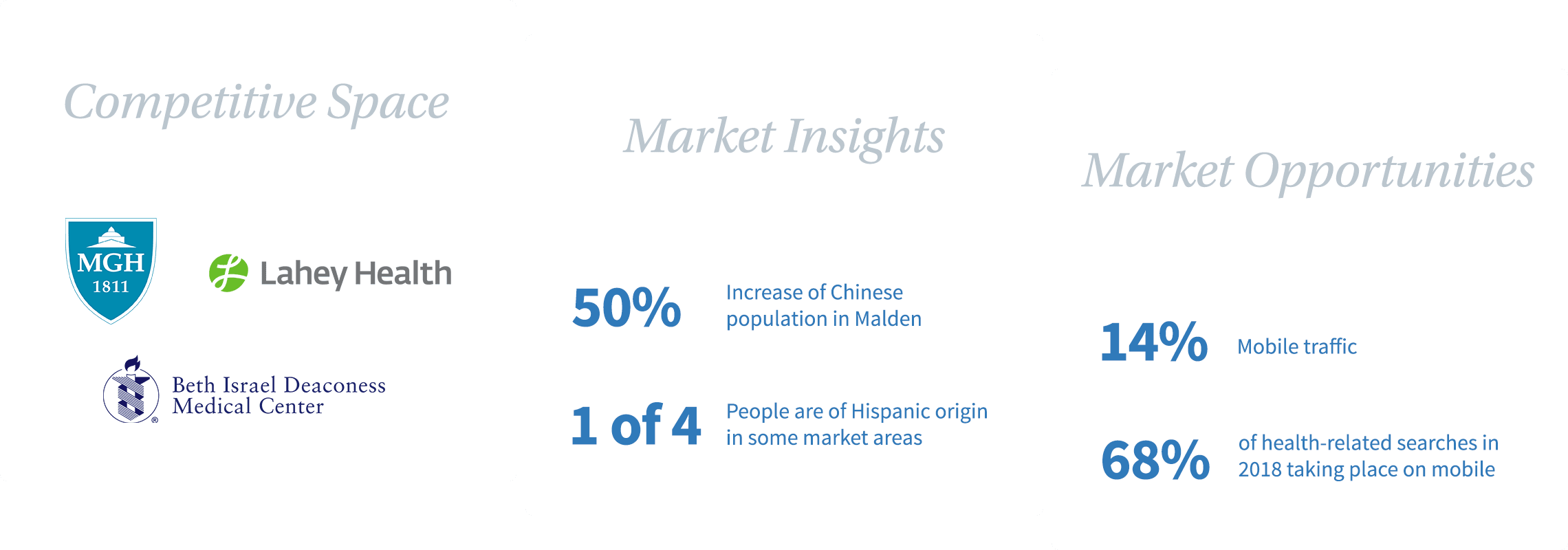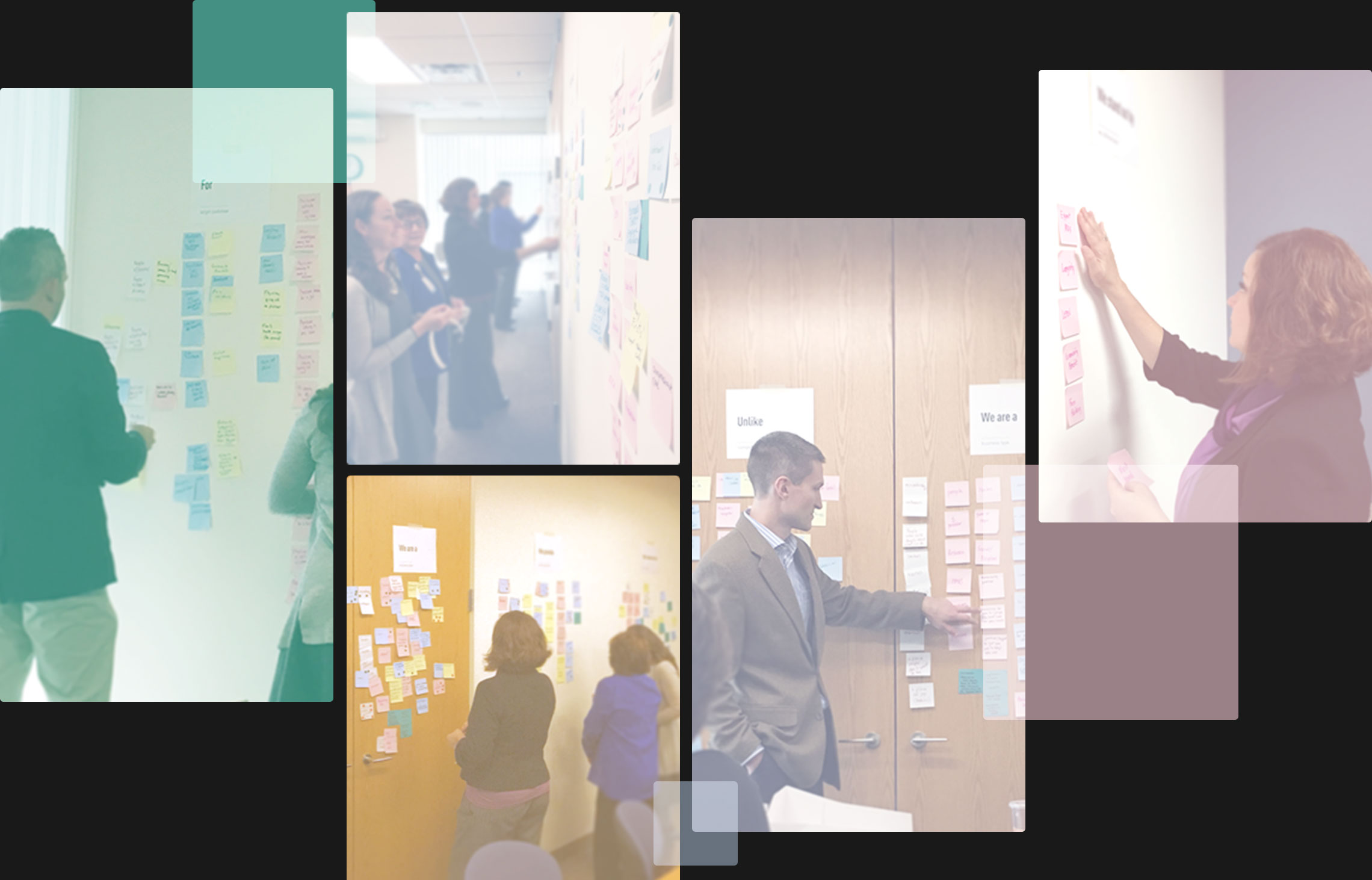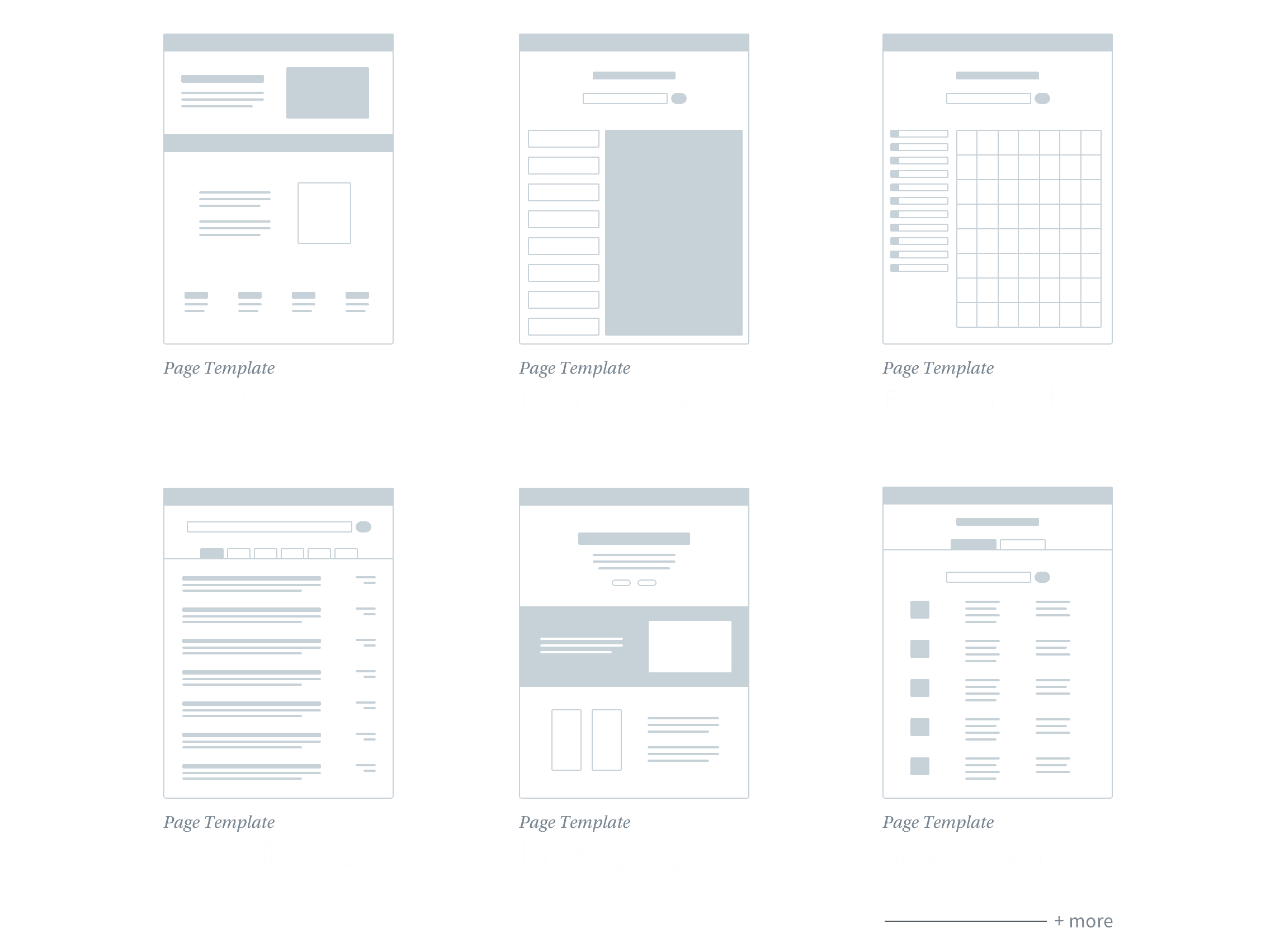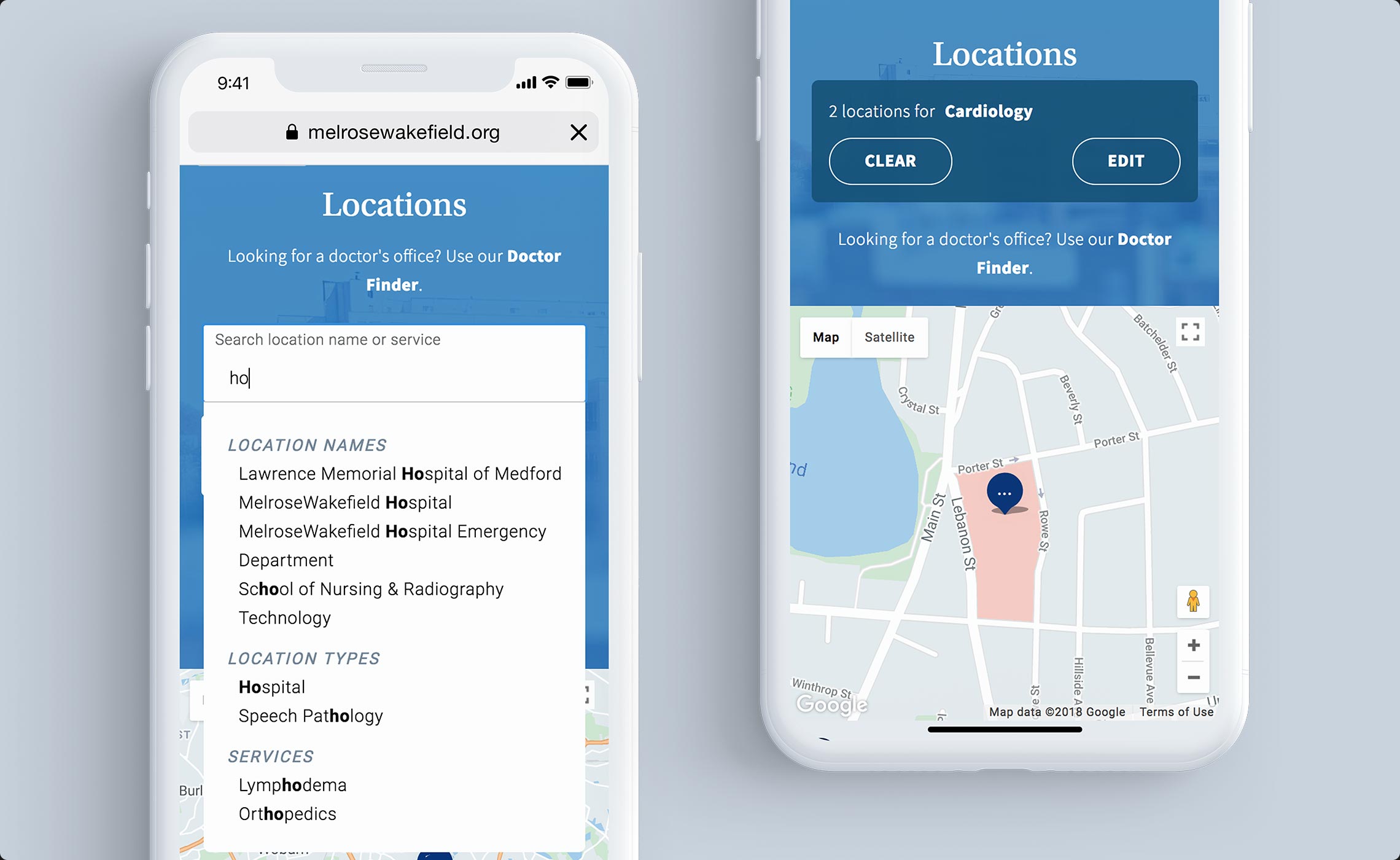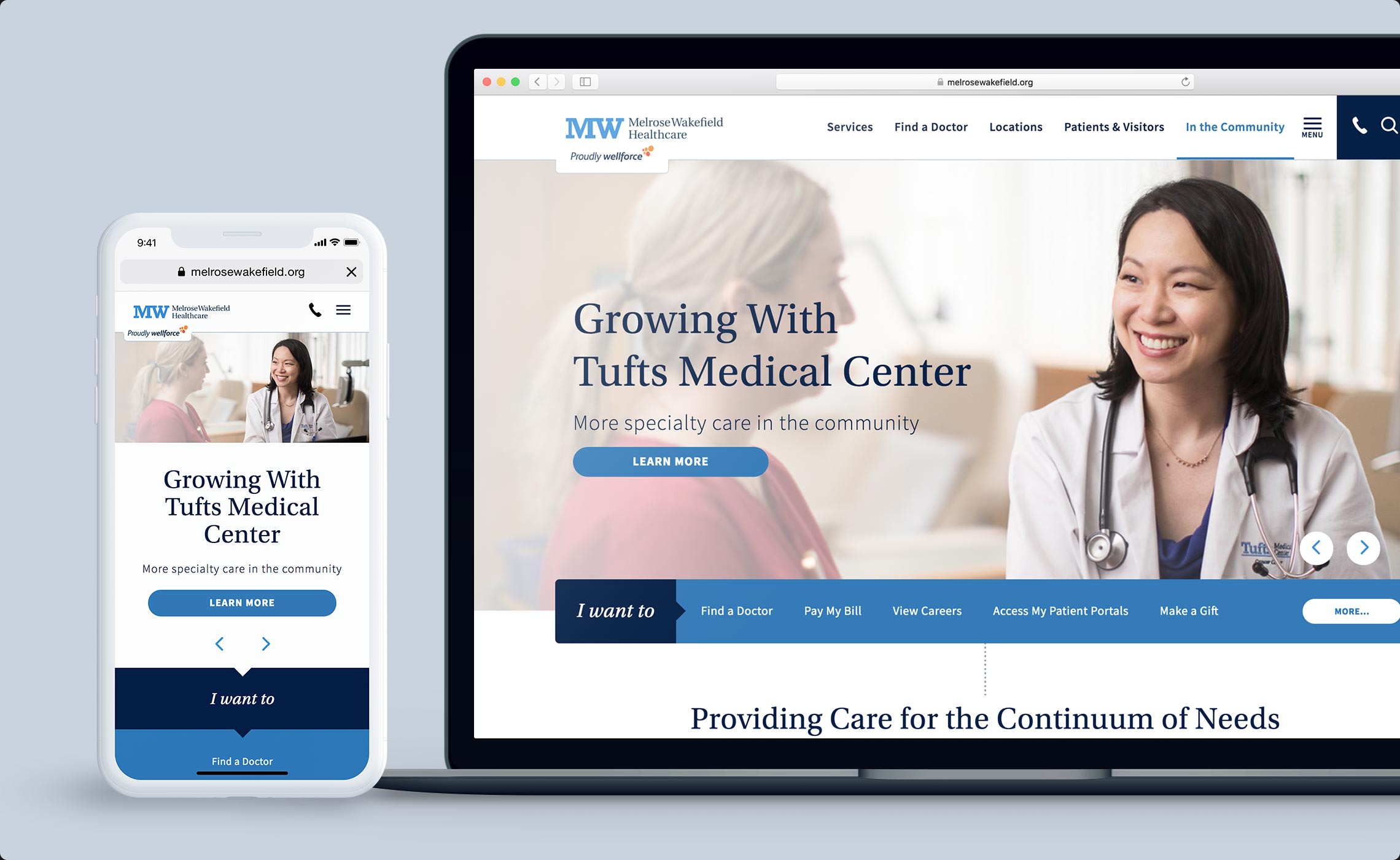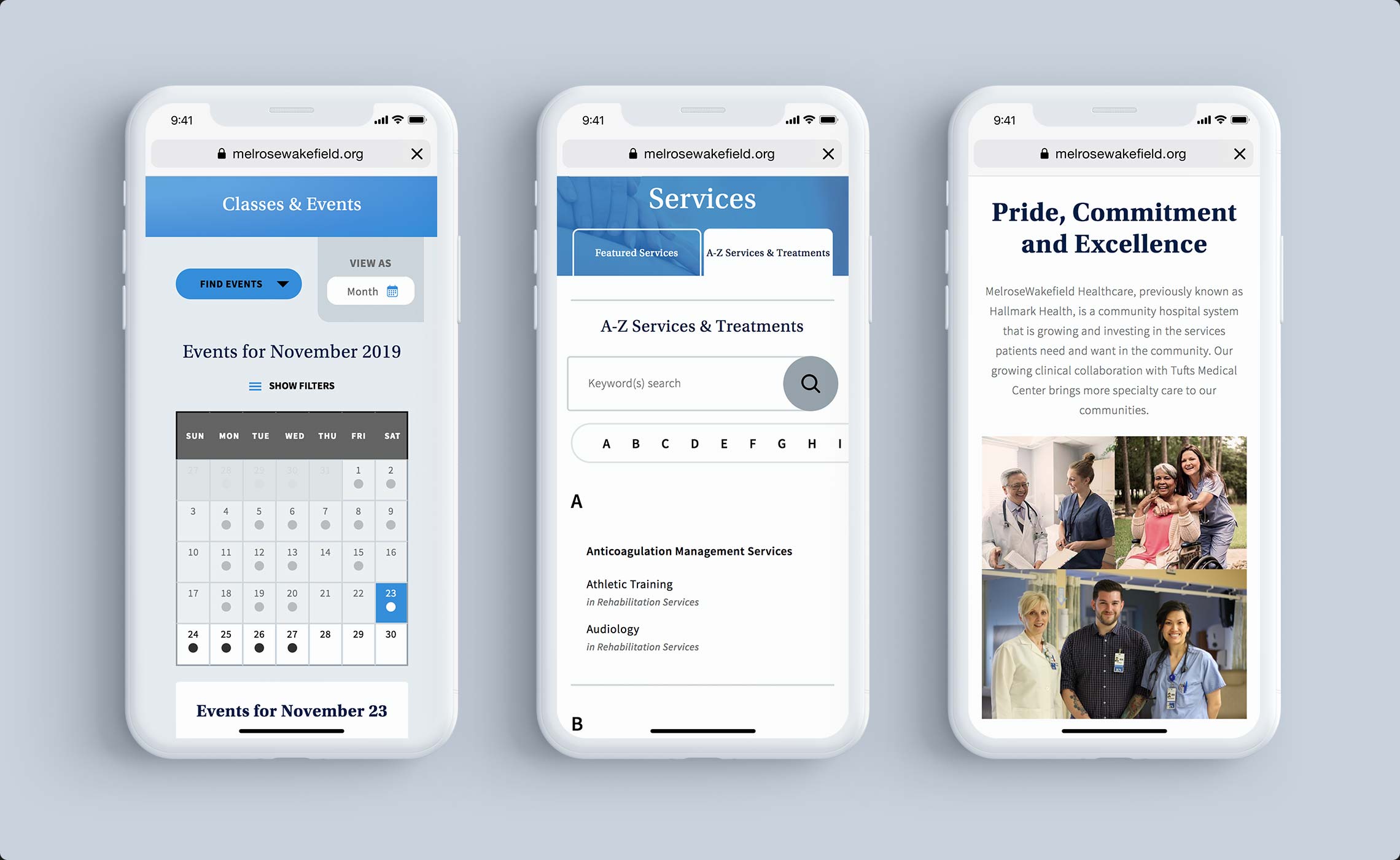Melrose Wakefield Healthcare
About the project // Timing is everything; especially when an organization is launching a new name and brand. This project required collaboration with MelroseWakefield Healthcare and their branding agency for a synchronized name, brand and website launch. As a growing and changing organization, they needed their website to be flexible, empowering them to manage content at scale and rapidly push out information to different types of website users.
Hats worn: UX research, UX strategy, Concepting, Wireframing, Prototyping, UX design, Content strategy
Created at Healthgrades
